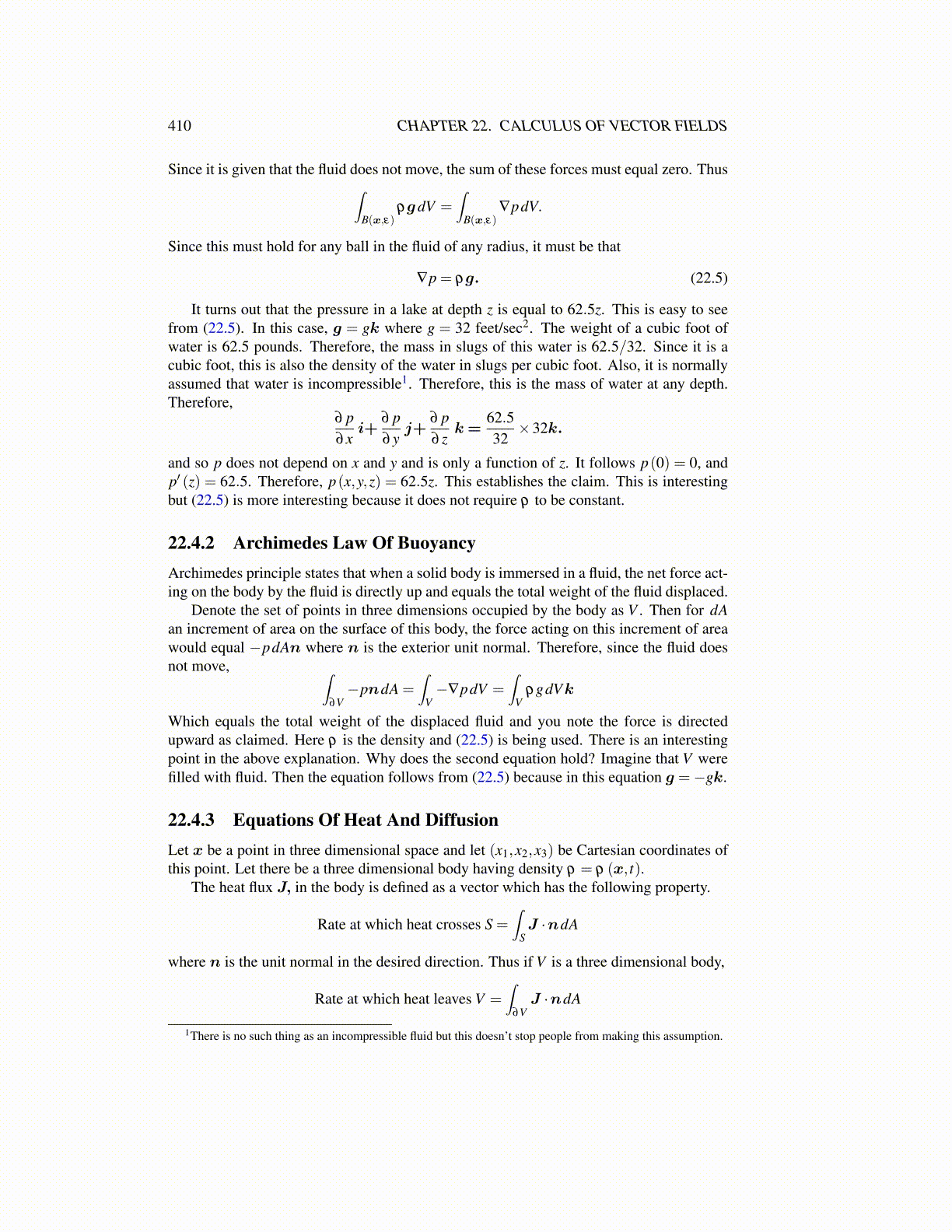
410 CHAPTER 22. CALCULUS OF VECTOR FIELDS
Since it is given that the fluid does not move, the sum of these forces must equal zero. Thus∫B(x,ε)
ρgdV =∫
B(x,ε)∇pdV.
Since this must hold for any ball in the fluid of any radius, it must be that
∇p = ρg. (22.5)
It turns out that the pressure in a lake at depth z is equal to 62.5z. This is easy to seefrom (22.5). In this case, g = gk where g = 32 feet/sec2. The weight of a cubic foot ofwater is 62.5 pounds. Therefore, the mass in slugs of this water is 62.5/32. Since it is acubic foot, this is also the density of the water in slugs per cubic foot. Also, it is normallyassumed that water is incompressible1. Therefore, this is the mass of water at any depth.Therefore,
∂ p∂x
i+∂ p∂y
j+∂ p∂ z
k=62.532×32k.
and so p does not depend on x and y and is only a function of z. It follows p(0) = 0, andp′ (z) = 62.5. Therefore, p(x,y,z) = 62.5z. This establishes the claim. This is interestingbut (22.5) is more interesting because it does not require ρ to be constant.
22.4.2 Archimedes Law Of BuoyancyArchimedes principle states that when a solid body is immersed in a fluid, the net force act-ing on the body by the fluid is directly up and equals the total weight of the fluid displaced.
Denote the set of points in three dimensions occupied by the body as V . Then for dAan increment of area on the surface of this body, the force acting on this increment of areawould equal −pdAn where n is the exterior unit normal. Therefore, since the fluid doesnot move, ∫
∂V−pndA =
∫V−∇pdV =
∫V
ρgdVk
Which equals the total weight of the displaced fluid and you note the force is directedupward as claimed. Here ρ is the density and (22.5) is being used. There is an interestingpoint in the above explanation. Why does the second equation hold? Imagine that V werefilled with fluid. Then the equation follows from (22.5) because in this equation g =−gk.
22.4.3 Equations Of Heat And DiffusionLet x be a point in three dimensional space and let (x1,x2,x3) be Cartesian coordinates ofthis point. Let there be a three dimensional body having density ρ = ρ (x, t).
The heat flux J, in the body is defined as a vector which has the following property.
Rate at which heat crosses S =∫
SJ ·ndA
where n is the unit normal in the desired direction. Thus if V is a three dimensional body,
Rate at which heat leaves V =∫
∂VJ ·ndA
1There is no such thing as an incompressible fluid but this doesn’t stop people from making this assumption.